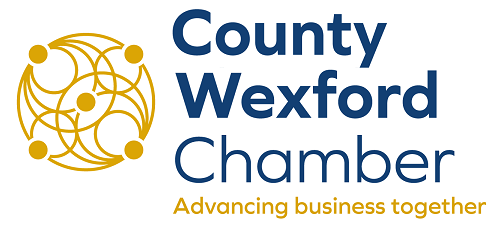- Home
- member news
- how recognise operational barriers limiting growth
How to Recognise Operational Barriers Limiting Growth

Just like an ecosystem in nature or a Formula 1 team, the interaction of everything and everyone in a business impacts the probability of success in any endeavour. We are familiar with structures which can be evaluated, such as department or role-focused KPIs, or cross-functional competencies, such as emotional intelligence, sustainability or digitisation. However, there is another force which I have continuously observed as a predictor of results. It is the pattern of how we work – the business dynamics.
Awareness of patterns
In Catalyst & Co, we focus on three major areas of business dynamics – culture, structure and alignment. When all are functioning effectively together any action, scaling included, feels more effortless and becomes sustainable. When they're dysfunctional to any significant degree, even capable teams struggle to perform at their potential, creating a resistance to growth that traditional business improvement approaches can't resolve. Unfortunately, the latter can very easily become a ‘way of doing things’ that is normalised and hard to break. For example, poor communication creates confusion, which creates more meetings, which reduces time for strategic work, which creates pressure that worsens communication and increases stress and dissatisfaction for all stakeholders, which stalls growth, which then creates more problems to solve.
Why is this important?
Running a company in the current climate requires every move to be strategic, the team to be agile, and the risks/return ratio to be continuously weighed up. Many established businesses reach a point where external indicators suggest continued growth should be straightforward e.g. strong market position, proven product, secure pipeline, satisfied clients. Yet it is often the case that internal operations feel increasingly complex and demanding. This mismatch can signal underlying issues that make growth implausible.
Let’s consider some examples.
Example: Getting ahead of capability
The business wins a significant contract that should boost revenue by 30%. However, the additional workload quickly exposes communication, process and QC gaps which were manageable (by sheer human effort) at a smaller scale. What started as a growth opportunity becomes a reputation and delivery risk, requiring intensive intervention.
Example: Ideas but no action
Your team generates good improvement ideas, but implementation consistently stalls and so the benefits of continuous improvement and innovation are lost, while your competitor takes the lead market position. The business maintains performance but loses competitive advantage because internal resistance prevents quick adaptation.
Example: The trusted manager problem
You notice that disengagement or under-performance are more common amongst the team members reporting directly to one particular manager. The cause is toxic management which is spilling over into other stakeholder experiences and relationships. What seemed like small and separate red flags are actually a major problem that has stalled growth and eroded trust.
Time to Investigate
Below are three ways to investigate what could be causing situations such as these and undermining your growth efforts and investment.
Test 1: The Basics - Check for the reoccurrence of persistent daily problems
Monitor for warning signs such as:
The same issues resurface repeatedly despite previous attempts to address them
Previously engaged team members become noticeably less enthusiastic or withdrawn
Key employees seem overwhelmed by workload that should be manageable
The business feels increasingly demanding of your personal attention
You feel frustrated, distracted, or stifled in your own role
Test 2: The Bottlenecks – Check for the who or what stalls progress in your workflow
Look for indicators such as:
Undocumented processes that only one person fully understands
Client relationships that depend entirely on individual connections
Decision-making that can't proceed without specific people's input
Knowledge or skills that aren't documented or transferable
Problem-solving that requires heroic individual effort
Test 3: The Bleed – Check where the losses are occurring across the business
The Lean framework provides a straightforward place to start considering any waste in a business.
Transport - Unnecessary movement of materials or products
Inventory - Excess stock beyond immediate needs
Motion - Unnecessary movement of people or equipment
Waiting - Idle time when nothing productive happens
Overproduction - Making more than customers demand
Overprocessing - Adding features or steps customers don't value
Defects - Errors requiring rework or causing waste
For service businesses in particular, we are also looking for telling signs such as:
Time creep - Projects consistently running over estimated hours without scope changes
Revision cycles - Multiple rounds of client feedback eating into project margins
Scope drift - Regularly delivering extra work without additional compensation
Admin overload - Excessive time spent on proposals, invoicing, or internal meetings
Tool sprawl - Multiple software subscriptions with overlapping functions
Utilisation gaps - Billable staff spending significant time on non-billable activities
Turn data into strategic action
What patterns did you notice? Which are not helpful to your growth goals? Business leaders recognise that paying attention to even the small things and getting ahead of an inefficiency or problem can have massive returns in the long run. Who doesn’t want the best team, best customer experience and best quality product/service out there!
My advice is to focus on either the strongest patterns affecting multiple areas and/or those impacting key customer or team members first. Gather your allies, get everyone on the same page and consider whether the expertise or influence needed for systemic improvement exists within your team or requires additional support.
Changing the Dynamics
Understanding what's happening behind daily operations requires curiosity and an openness to see the opportunity within. Without conscious intervention current dynamics patterns will continue and produce similar results. As my old teacher used to say, “if you keep doing what you’ve always done, you’ll keep getting what you always got”. This is why successful change management requires deliberate disruption of existing patterns. Businesses making this investment typically discover that even small changes generate significant improvements in performance, engagement, well-being and growth capability.
About the Author

Gemma O'Halloran is the owner of Catalyst & Co, specialising in change diagnostics and project management. With her Business Dynamics Indicator (BDI) Assessment© and bespoke supports she partners with business leaders to navigate tricky or complex challenges and resolve operational limitations to their growth plans. Gemma has 20 years' experience, nationally and internationally, in operations and project management in highly entrepreneurial and creative environments, including events, visitor centres, investor networks and numerous small service businesses across multiple industries.
To discuss how Catalyst & Co can support business growth, contact Gemma at hello@catalystandco.ie, or visit www.catalystandco.ie for more information.
